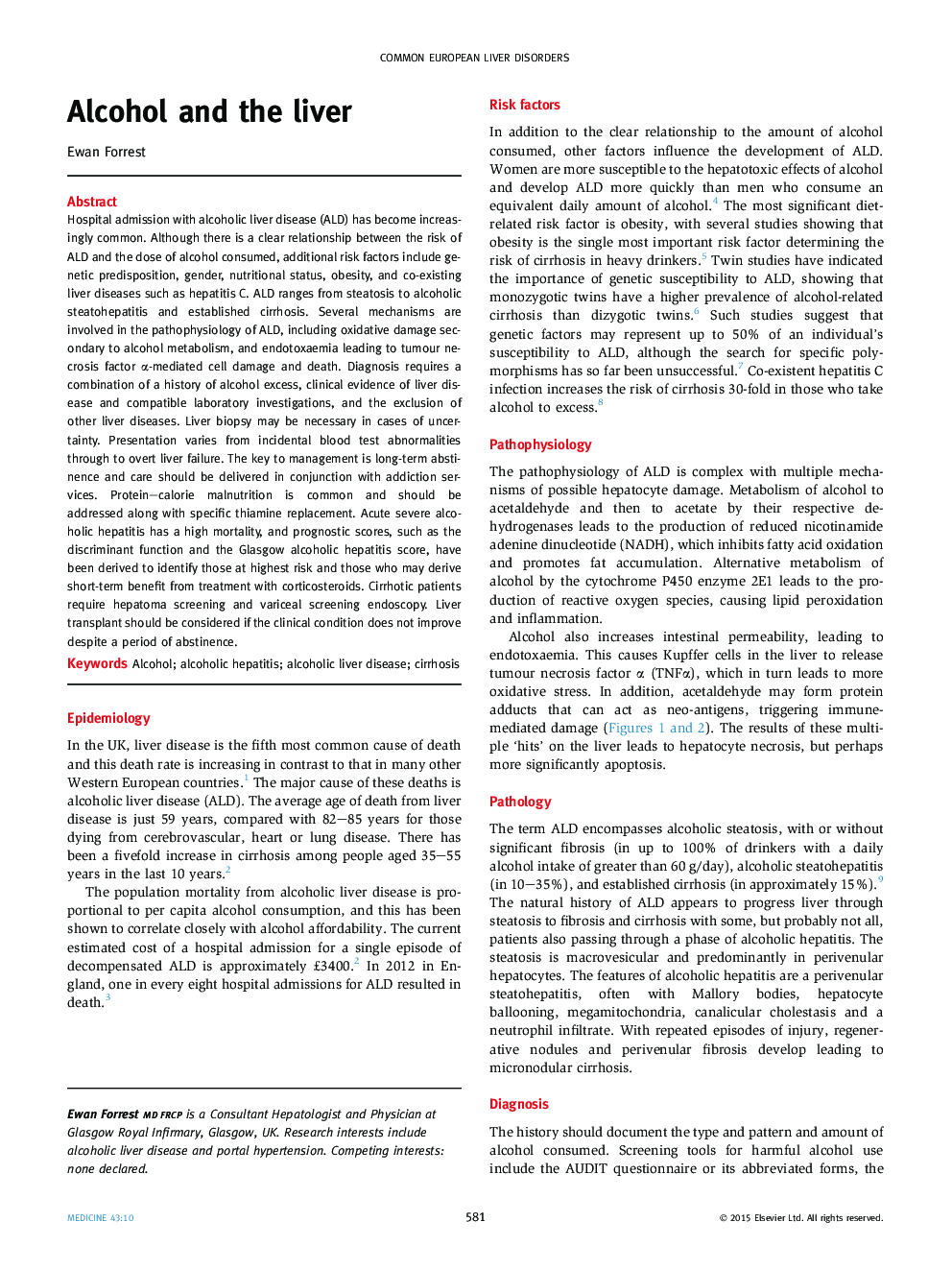| Article ID | Journal | Published Year | Pages | File Type |
|---|---|---|---|---|
| 3806381 | Medicine | 2015 | 4 Pages |
Hospital admission with alcoholic liver disease (ALD) has become increasingly common. Although there is a clear relationship between the risk of ALD and the dose of alcohol consumed, additional risk factors include genetic predisposition, gender, nutritional status, obesity, and co-existing liver diseases such as hepatitis C. ALD ranges from steatosis to alcoholic steatohepatitis and established cirrhosis. Several mechanisms are involved in the pathophysiology of ALD, including oxidative damage secondary to alcohol metabolism, and endotoxaemia leading to tumour necrosis factor α-mediated cell damage and death. Diagnosis requires a combination of a history of alcohol excess, clinical evidence of liver disease and compatible laboratory investigations, and the exclusion of other liver diseases. Liver biopsy may be necessary in cases of uncertainty. Presentation varies from incidental blood test abnormalities through to overt liver failure. The key to management is long-term abstinence and care should be delivered in conjunction with addiction services. Protein–calorie malnutrition is common and should be addressed along with specific thiamine replacement. Acute severe alcoholic hepatitis has a high mortality, and prognostic scores, such as the discriminant function and the Glasgow alcoholic hepatitis score, have been derived to identify those at highest risk and those who may derive short-term benefit from treatment with corticosteroids. Cirrhotic patients require hepatoma screening and variceal screening endoscopy. Liver transplant should be considered if the clinical condition does not improve despite a period of abstinence.
